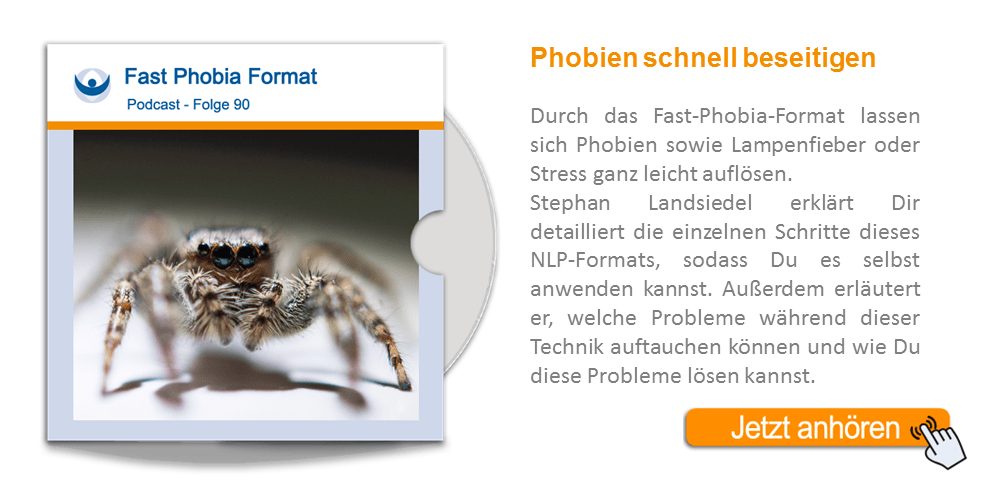Fast Phobia Technique
This is one of the most well-known and perhaps most remarkable techniques in NLP. Using this method, it’s often possible to eliminate phobias permanently within twenty to thirty minutes.
Background: Understanding Phobias from an NLP Perspective
A phobia is a strong, uncontrollable, and irrational fear response. The person consciously knows the fear is unfounded but cannot control it. To experience a phobia, a person must be able to create vivid internal images and be associated within them. Once this inner movie starts playing, it runs automatically.
The only way to stop the reaction is by avoiding the external trigger. For example, someone with a fear of heights feels safe while far from the edge but experiences intense fear upon approaching it. Similarly, someone with a fear of elevators may begin feeling anxious just a few meters before reaching one. The inner “fear movie” runs automatically — the person can’t consciously stop it.
The phobic response is the physical reaction while the inner fear movie plays. A non-phobic person, however, has a kind of meta-awareness — if things become unpleasant, they can mentally stop or change the image. This difference explains why phobics feel powerless: the external trigger fires an internal anchor that starts the movie.
Phobias are often learned during a single dramatic event. Example: A child plays in the garden, puts a worm in their mouth, and the mother screams hysterically — the child learns to associate fear with worms. Phobias can also be learned by observation. For instance, many people who fear sharks have never seen one in real life — they watched the movie *Jaws* and unconsciously associated the fear. Later, even looking at the ocean can trigger anxiety, which may generalize to lakes or swimming pools over time.
Goal: The Fast Phobia Technique helps regain control over this inner movie. This is achieved by:
- Teaching the client to dissociate and watch the internal movie in black and white on an imaginary cinema screen.
- At the worst point, the client steps into the movie (associated), adds color, and lets the movie run backward until they reach a safe state.
Fast Phobia Format: Step-by-Step
Ecology Check: Imagine that we have successfully completed the intervention — what would happen then? Are there any negative consequences if you no longer experience this fear response?
- Think of a situation in which you had a phobic reaction. Recall it vividly enough to feel a mild response.
- Now step out of that state, close your eyes, and imagine watching a black-and-white movie of the same situation on a cinema screen.
- See yourself slowly approaching the critical moment in the movie.
- At the most intense point, let the inner film play to completion — up to the worst moment.
- At that point, freeze the movie on the screen as a still image.
- Now step into the movie (associated). You are now inside the situation, seeing through your own eyes. Add color to the scene.
- Let the movie quickly run backward until you reach a safe point before the event began. Open your eyes.
- Repeat this process several times (usually 5–10 repetitions). Then test whether recalling the original situation still triggers the phobic reaction. If it does, repeat the exercise; if not, verify the result in a real-life situation when appropriate.

 Deutsch
Deutsch English
English Français
Français 中文
中文 Español
Español नहीं
नहीं Русский
Русский